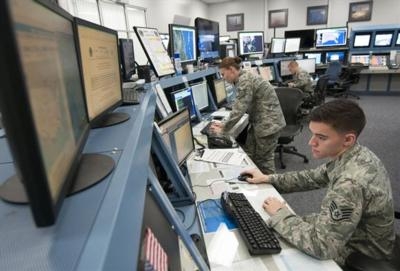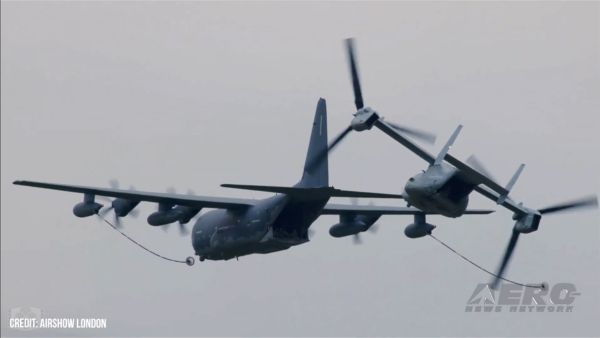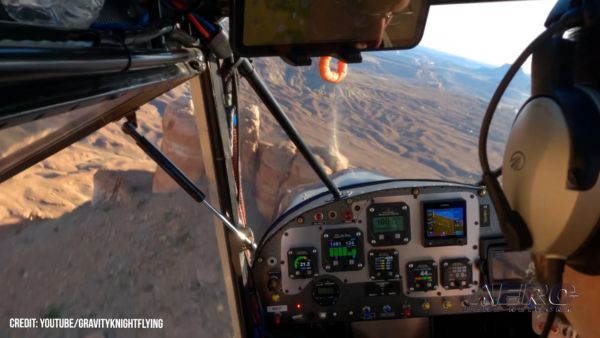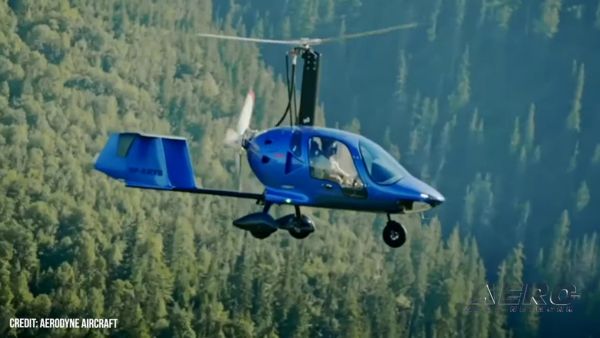Launches May Trigger Lightning Strikes Even When No Storm Is Present
Predicting weather for space missions is tough enough. But when forecasts cover part of Florida’s lightning alley, where a rocket blasting off could spur strikes, the demands of the job can skyrocket.

“Launches can trigger lightning strikes even when you don’t have lightning in the area,” said Kathy Winters, a launch weather officer with the 45th Weather Squadron, which tracks the climate around Cape Canaveral Air Force Station.
An electrical field, Winters explains, may already be present in the clouds. So when a rocket blasts off, it can induce a lightning strike with its trail of exhaust -- a conductive path to the ground.
If a strike happens to hit a rocket, there’s a chance it could damage the self-destruct system, the only way to destroy an errant rocket. “It’s all about safety and that’s a big reason why we do what we do on launch day,” said Tech Sgt. Matthew Mong, a range weather forecaster with the squadron.
“We’re basically sending up a giant conventional explosive,” he added. “And if you can’t control when and how it goes, then there are potentially millions of people at risk.”
Space mission experts aim for specific times when they can launch rockets into orbit. Some launch windows are merely seconds, while others can be a few hours long. “It’s all about the orbit you’re trying to get into,” Winters said. “Or if it’s a rendezvous (with another spacecraft) it’s going to be an even shorter launch window.”
Much of the squadron’s efforts are focused on these windows. If a launch has to be scrubbed due to weather, the delay could cost hundreds of thousands of dollars. Forecasters attempt to avoid these costly delays, without being ruled by them. “You can’t be worried about how much it’s going to cost,” Winters said of delays. “You have to be focused on the weather rules and procedures. Everybody wants to see the rocket go, but only when it’s the right time.”
Armed with $80 million-plus worth of equipment, from towers, sensors and radars, the squadron’s forecasters strive to be as accurate as possible. After all, with 30 launches scheduled this year, a lot is riding on them.

Even when one team member is a no go for launch due to weather observations, especially wind speed and direction, the whole squadron is a no go. “We report that to the range. It’s then up to them if they want to launch,” said Winters, noting she’s never seen a weather rule waived since 2000 when she first started.
About half of scrubbed missions are weather related, she added.
Located between the Banana River and Atlantic Ocean, the spaceport gets wind gusts from opposing sides that can spawn erratic weather. There’s also the rare chance of a tornado or hurricane stalling missions. “The weather is never boring, never redundant,” Winters said. “It’s very challenging.”
Space launches, she noted, can handle strong winds anywhere from 20 to 50 mph, depending on the rocket.
Forecasters try to glean reliable estimates from studying weather patterns in several 5-mile rings that dot the 500-square-mile area they cover. The tailored forecasts help thousands of Airmen and mission partners stay at work on critical missions when severe weather looms. “It lets us keep things rolling,” Mong said of the radar system. “If we just did a blanket forecast we could stop work for hours for everyone and we wouldn’t get a whole lot done here.”
Besides radar, simple but effective weather balloons mine the sky for upper-air conditions throughout the day, with more balloons used on launch days. “That pretty much drives all model forecasting,” Mong said of data collected by balloons that go as high as 115,000 feet. “Without it, we couldn’t really do much.”

When lightning is present, he added, forecasters remotely roll out a “weatherbot” to release a balloon while its operator stays indoors.
Without accurate data, the odds of a rocket going up on its launch day are greatly impacted. Even with all the squadron’s gadgets, the stormy nature of Central Florida still tests forecasters. “It’s a great location with not so great weather for what we’re trying to do,” Mong said. “But it’s an ideal place because of the ocean and the large area here that gives us more launch options.”
(Source: Air Force News Service. USAF image)
 ANN's Daily Aero-Term (05.10.24): Takeoff Roll
ANN's Daily Aero-Term (05.10.24): Takeoff Roll Aero-News: Quote of the Day (05.10.24)
Aero-News: Quote of the Day (05.10.24) Airborne 05.06.24: Gone West-Dick Rutan, ICON BK Update, SpaceX EVA Suit
Airborne 05.06.24: Gone West-Dick Rutan, ICON BK Update, SpaceX EVA Suit Airborne 05.03.24: Advanced Powerplant Solutions, PRA Runway Woes, Drone Racing
Airborne 05.03.24: Advanced Powerplant Solutions, PRA Runway Woes, Drone Racing Aero-News: Quote of the Day (05.11.24)
Aero-News: Quote of the Day (05.11.24)





